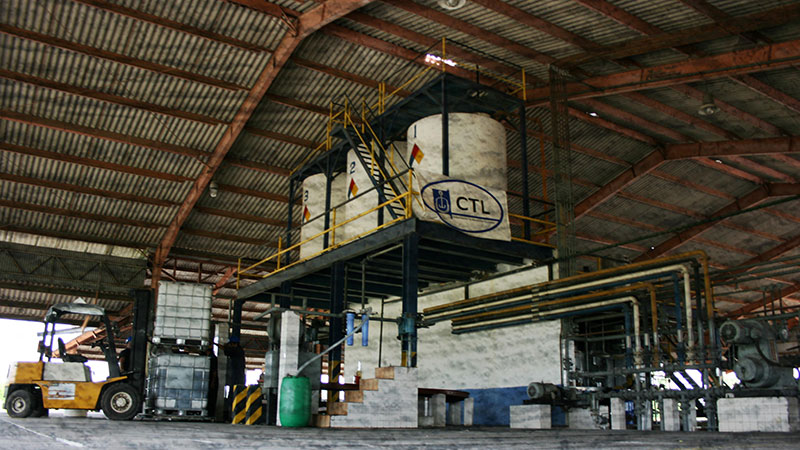Use As Directed: Promoting Sustainability with Agrochemicals
Proper use of agricultural chemicals creates sustainable environments, improves yields, and reduces the chance of resistance to those chemicals among pests. But the challenge has, and will continue to be, ensuring that such chemicals are used as directed.
It seems to be human nature to think that if a small amount of something is good, a lot of it is even better. We know that’s not true, and a story that recently happened to a friend offers a small example of the dangers of that type of thinking.
My friend had a clogged drain in his home and bought a commercial drain cleaner to deal with the problem. Because he hates to read the label (or any instructions, for that matter), he decided that he would see better results if instead of the teaspoon of product recommended by the manufacturer, he should use the entire can. Which he did, and the results were what you’d expect: The pipes became so hot he couldn’t even touch them.
Fortunately he avoided catastrophic damage, but it is a cautionary story about what can happen when a chemical is not used as directed.
Even for home use, when it comes to pesticides, weed killers, fertilizers, and other agricultural chemicals, there is a reason for the directions for use. Manufacturers specify how to use the product, and how frequently and where specifically it should be applied. Improper usage can lead to minor health concerns or lawn and garden problems.
The same holds true with pesticides and other chemicals for larger scale agricultural use. When agricultural chemicals are not used properly, the ramifications for production can be surprising, affecting the sustainable development of agriculture.
Take what’s happening in China, for instance.
Resistance Effects from Overuse of Agricultural Chemicals
China has long been known to overuse agricultural chemicals. The demand for food for its enormous population, combined with lax restrictions on farms of smaller sizes, has caused the problem to balloon – even becoming the focus of scientific investigation.
Just last year a study was conducted by a team from the Universities of Melbourne, Zhejiang, Fudan, Wuhan and Stanford. The findings were published in the Proceedings of the National Academy of Sciences of the United States of America.
The scientists taking part in the study determined that “reducing the use of agricultural chemicals to an optimal level is a crucial challenge for the sustainable development of agriculture.”
According to sources cited in the study, China is “the world’s largest consumer of agricultural chemicals; it uses over 30% of global fertilizers and pesticides on only 9% of global cropland.” This overuse has led to financial losses and pollution on not only a local scale but globally as well. While the study acknowledges that the Chinese government has recently taken pains to reduce pollution from agricultural chemical overuse, “the effects have been rather limited and the use of agricultural chemicals has continued to increase.”
The overuse of pesticides can even lead to resistance to the chemicals among the very insects those pesticides are targeted to treat.
In 2017, the National Institutes of Health posted a study from the Journal of Economic Entomology, monitoring insecticide resistance in Guizhou Province, China. The study found that as chemical insecticide use to control rice hoppers increased, “resistance to a number of insecticides has been reported,” which ultimately led to “control failure.” Treatment for an insect outbreak as early as 2005 was suspended in China because of “high resistance” to the treatment chemical.
The authors of the study further outlined other cases of insects’ resistance to pesticides from overuse of chemicals, but even without going into detail the conclusions from these findings are clear. Agricultural chemicals must be used as directed. Failure to do so leads to problems with health, pollution, and even resistance to the pesticides themselves. That is not a sustainable model for commercial agriculture.
Resources for Responsible Use
Fortunately, there are a number of resources available around the world that can offer greater insight into responsible use and sustainable practices. Many of these resources are professional associations created by the industry in the interest of stewardship and shared responsibility.
For example, RISE, or Responsible Industry for a Sound Environment is a national trade association of manufacturers, formulators, distributors, and others involved with pesticides. The organization routinely shares information about the use and regulation of pesticides – and maintains contact with regulators and policymakers, as the organization states, to “ensure products are used properly and are available when needed.”
CropLife America is another national trade association that represents the manufacturers, formulators, and distributors of pesticides. The organization works in the industry to aid in “product stewardship initiatives,” as well as regulatory and sustainability initiatives. CropLife America advocates for “responsible use of innovative, safe and environmentally sound crop protection technologies” that the company says are “essential to the global production of safe, affordable, and sustainable food, feed, fiber, and renewable or alternative energy.”
At the farm level, the Response-Inducing Sustainability Evaluation (RISE – not related to the RISE organization above) was developed at the Swiss College of Agriculture, Bern University of Applied Sciences. This RISE is a computer-based tool that helps identify strengths and weaknesses regarding sustainability, and offers farmers insight into areas in which agricultural production can be improved.
Stewardship and Shared Responsibility
How we in the industry work with the farm community around the world is a matter of good stewardship for manufacturers. We are all interested, obviously, in human safety and environmental impacts.
On a practical level, we are also interested in the growing problem of pest control resistance. We do not want to see products used improperly so that pests and weeds strains become resistant to application – which might then lead to even more extensive misuse of the products.
Each of us in the industry has a shared responsibility for good stewardship and sustainability. We all must think about the implications of our actions. If we want to think about how we act most appropriately in a way that is environmentally safe, without damaging impacts to health, it’s important to start by following directions.
That’s why they’re there.






